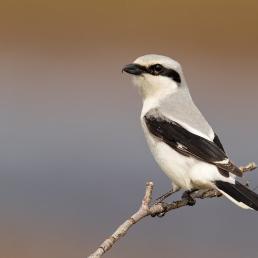

Join BirdNote tomorrow, November 30th!
Illustrator David Sibley and actor H. Jon Benjamin will face off in the bird illustration battle of the century during BirdNote's Year-end Celebration and Auction!
According to NASA, there are about 63,000 square miles of lawn in the US — nearly enough to cover the state of Wisconsin. That’s bad news, because most birds (other than this European Starling) prefer shrubs that provide food and cover. And lawns suck up fertilizers, herbicides, fossil fuels, and extraordinary quantities of water. Fortunately, lawns are also easy to replace with bird-friendly elements: borders or islands of dense, fruiting shrubs, layers of foliage for shelter, and wildflowers to attract native pollinators. Check out the links below to get started!
BirdNote®
America’s Love Affair with Lawn
Written by Bob Sundstrom
This is BirdNote. In 2015, a study by NASA found that the United States has around 63,000 square miles of lawn. Enough turf to carpet more than 30 million football fields, including end zones. Or nearly enough to cover the state of Wisconsin. Unless you’re a starling, that’s not great news – because most birds prefer shrubs that provide food and cover. And lawns have a lot of side effects.
[Song Sparrow song, http://macaulaylibrary.org/audio/191231, 0.098-.11]
They suck up fertilizers, herbicides, fossil fuels, and extraordinary quantities of water. But they’re hard to escape, in part because their roots lie deep in American society.
The well-kept lawn began as an ideal to please the eye, a “velvet robe” surrounding the home, as one 1870s reformer put it. It soon became a badge of good character, deviation from which was seen as distinctly undesirable. Fast forward to the 1950s, and the idea of the lawn as an indicator of success was firmly established, as suburbs bloomed across the country.
[Music]
While the symbolism of the lawn is hard to shift, actual lawns are pretty easy to replace with bird-friendly elements: borders or islands of dense, fruiting shrubs, layers of foliage for shelter, and wildflowers to attract native pollinators. We’ll help get you started, at BirdNote.org.
I’m Michael Stein.
###
Bird sounds provided by The Macaulay Library of Natural Sounds at the Cornell Lab of Ornithology, Ithaca, New York. Song Sparrow [191231] recorded by W L Hershberger
Music: ‘Holiday for Strings’ written by David Rose performed by David Rose and his Orchestra,
Cleopatra 2009
BirdNote’s theme music was composed and played by Nancy Rumbel and John Kessler.
Producer: John Kessler
Executive Producer: Dominic Black
© 2016 Tune In to Nature.org May 2016/2019 Narrator: Michael Stein
ID# garden-11-2016-05-05 garden-11
“velvet robe” from Frank J. Scott’s 1870 book, The Art of Beautifying Suburban Home Grounds of Small Extent. [quoted in Michael Pollan article]
Other links, sources: http://www.huffingtonpost.com/entry/lawn-largest-crop-america_55d0dc06e…
http://michaelpollan.com/articles-archive/why-mow-the-case-against-lawn…
New Yorker story on lawns- http://www.newyorker.com/magazine/2008/07/21/turf-war-2
http://nativeplantwildlifegarden.com/from-lawn-to-wildlife-habitat/
But if just 20% of the ground currently under lawn was re-configured as bird friendly habitat, that would add a total area more than five times the size of the Everglades as hospitable for birds.



